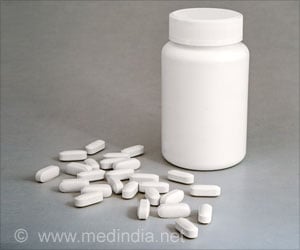Johns Hopkins Researchers have shown that a drug commonly used to lower blood pressure reverses muscle wasting in genetically engineered mice
Johns Hopkins Researchers have shown that a drug commonly used to lower blood pressure reverses muscle wasting in genetically engineered mice with Marfan syndrome and also prevents muscle degeneration in mice with Duchenne muscular dystrophy.
The results are reported online this week at Nature Medicine.In 2006, a team led by Harry "Hal" Dietz, M.D., discovered that treating Marfan mice with losartan (Cozaar) dramatically strengthens the aorta, the major artery carrying blood away from the heart, and prevents enlargement and risk of bursting, a condition known as aortic aneurysm. A clinical trial to assess how effective losartan is for treating people with Marfan will launch within weeks.
"In addition to the aortic defect, children with severe Marfan syndrome often have very small, weak muscles, and adults with Marfan often can't gain muscle mass despite adequate nutrition and exercise," explains Dietz, a professor at the McKusick-Nathans Institute of Genetic Medicine at The Johns Hopkins University School of Medicine.
Dietz and his colleagues had previously discovered that many features of Marfan syndrome, including aortic aneurysm, arise from excess activity of TGF-beta, a protein that instructs cell behavior. Marfan mice have muscles containing much scar tissue between unusually small muscle fibers, which also show evidence of too much TGF-beta activity. Dietz's team reasoned that blocking the activity of TGF-beta might restore normal muscle structure and function.
First, the research team injected Marfan mice with a protein that binds TGF-beta and renders it inactive. This TGF-beta-blocking protein caused muscle fibers in these mice to grow bigger than those in untreated Marfan mice. "Not only did the muscles look bigger and better under the microscope," says Dietz, "the mice were also stronger and showed reduced fatigue."
The team then treated Marfan mice with losartan, a medication known to be safe in treating hypertension in all age groups and more importantly, known to block TGF-beta activity. Losartan treatment over six months "completely restored muscle architecture" and vastly improved strength, according to Dietz.
Advertisement
Dietz's team then wondered whether the muscle improvement from blocking TGF-beta was specific to Marfan syndrome or possibly represented a strategy that could be applied to other muscle diseases such as Duchenne muscular dystrophy (DMD). Duchenne muscular dystrophy, the most common form of incurable muscular dystrophy in children, generally leads to death in early adulthood or before. DMD causes muscle fibers to be incredibly fragile. As a person with DMD ages, their muscles slowly lose the ability to regenerate and repair, which leads to loss of muscle function, explains Cohn.
Advertisement
The team treated one group of DMD mice with TGF-beta-blocking protein and another group with losartan. Both groups of treated mice showed completely restored ability to regenerate muscle after injury, whereas untreated mice had large patches of scar tissue in place of muscle. Losartan treatment over many months preserved muscle architecture "over the long haul," says Dietz.
The team then measured muscle strength of untreated DMD mice as well as mice treated for nine months with losartan by connecting the muscles to tiny "force-meters" that measured contraction after an electrical stimulus. While the untreated DMD muscles were "very weak," according to Dietz, losartan-treated DMD muscles were "indistinguishable" from normal muscles in how strongly they contracted.
"We may have a real treatment alternative for a fatal disease-Duchenne muscular dystrophy-that improves both length and quality of life," says Cohn.
"For so many reasons, we're excited about these studies and their potential to transform the care of patients with both Marfan syndrome and Duchenne muscular dystrophy," says Dietz. "First, this treatment strategy comes from understanding the basic science, the molecular underpinnings of the disease. Second, the treatment has worked exceptionally well in animal models. Third, we are not dealing with a mysterious compound that was simply pulled off the shelf - losartan has already been proven safe," says Dietz.
"Furthermore, losing the ability to regenerate muscle over time is seen in many inherited and acquired muscle diseases and is even part of the normal aging process," adds Cohn. "We may only be seeing the tip of the iceberg."
Losartan first approved for use as a blood pressure medication in 1995 by the U.S. Food and Drug Administration, often is used as an alternative to other antihypertensive drugs in people who cannot tolerate other blood pressure medicines.
Source-Eurekalert
SRI








